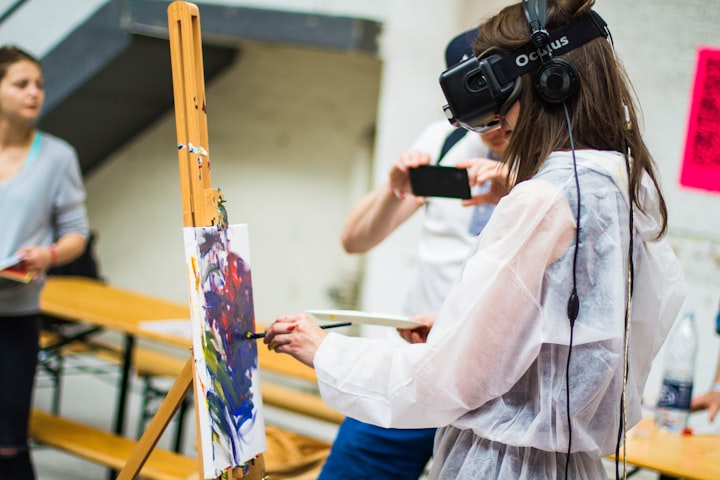
Introduction:
Technology has changed a lot of different businesses and industries in the digital age. It has become an essential part of our day-to-day lives. Education is one area where it has a particularly significant impact. The way students learn and teachers teach has been transformed by the integration of technology into classrooms and the rise of online learning platforms. In this article, we dive into the extraordinary job of innovation in schooling, featuring its advantages, challenges, and the thrilling future it holds.
1st Chapter: The Ascent of Innovation in the Homeroom
Over the course of the last 10 years, conventional homerooms have seen a huge shift as innovation penetrates the learning climate. Intelligent whiteboards, tablets, and workstations have supplanted blackboards and course readings, offering teachers a great many devices and assets to connect with understudies in previously unheard-of ways. Teachers can present information in dynamic formats using digital tools, incorporating multimedia elements like videos, images, and interactive simulations to improve comprehension and retention. This interactive approach to education keeps students' attention and encourages active participation, making the educational experience more immersive.
2nd Chapter: Engaging Understudies through Internet Learning Stages
The rise of internet learning stages has additionally changed schooling by engaging understudies with adaptable and available learning amazing open doors. These platforms offer numerous courses and educational resources that can be accessed at any time and from any location. Virtual classrooms with live instructors and self-paced courses are just two of the many learning options available to students. Students are able to take charge of their education thanks to this adaptability, which accommodates a variety of learning styles. Additionally, online learning platforms frequently include interactive features like virtual group projects, collaborative assignments, and discussion boards, which help students develop skills in critical thinking, problem-solving, and teamwork.
Section 3: Benefits of Using Technology in the Classroom Using technology in the classroom has numerous benefits for both students and teachers. First, it makes students more interested and motivated. Technology increases student participation and overall interest in the subject matter by making learning more enjoyable and interactive through interactive lessons, gamification elements, and multimedia-rich content. In addition, technology makes it possible for learning experiences to be tailored to the specific requirements, preferences, and pace of each student. Students can advance at their own pace and acquire a deeper comprehension of the material thanks to adaptive learning systems, which make use of data analytics and algorithms to tailor instruction and provide targeted feedback. This individualized way to deal with learning advances scholastic achievement and assists understudies with arriving at their maximum capacity.
Part 4: Managing the Obstacles Despite the undeniable advantages of using technology in education, obstacles must be overcome in order to realize its full potential. The digital divide, which refers to the disparity in students' access to technology and internet connectivity, particularly among underserved communities, is a major concern. To close this gap and guarantee equal opportunities for all students, governments, educational establishments, and technology companies must work together. Drives, for example, giving reasonable gadgets and web access, laying out PC labs in schools, and offering innovation preparing to educators can assist with alleviating the computerized partition. Additionally, in order to guarantee a safe and secure learning environment, concerns about cyberbullying and online safety necessitate the creation of robust digital literacy programs and stringent security measures.
5th Chapter: The Education of the Future: Where Education Will Go in the Future As technology continues to advance at an unprecedented rate, there is enormous potential for the future. The learning experience will be reimagined by emerging technologies like artificial intelligence (AI), virtual reality (VR), and augmented reality (AR). Artificial intelligence fueled mentoring frameworks can give customized criticism, versatile learning ways, and keen proposals in view of understudies' assets and shortcomings. Students can explore historical sites, carry out intricate experiments, and participate in realistic simulations thanks to immersive educational experiences made possible by virtual reality and augmented reality technologies. These technologies can take students outside of the classroom and give them hands-on learning opportunities that were previously unimaginable.
Conclusion:
Technology has changed education, opening up new opportunities for learning and instruction. The numerous advantages of technology in education range from the incorporation of technology into conventional classrooms to the rise of online learning platforms. Notwithstanding, it is significant to address difficulties, for example, the computerized partition and online wellbeing worries to guarantee equivalent access and a safe learning climate for all. The fate of schooling holds invigorating possibilities, with arising advances like computer based intelligence, VR, and AR set to reclassify the growth opportunity. By embracing innovation and utilizing its true capacity, we can open a universe of conceivable outcomes and furnish understudies with the abilities they need to flourish in the computerized time.
About the Creator
Ahmed
I am an enthralling writer with a flair for storytelling; I weave words that take readers into enthralling realms of their imagination.






Comments
There are no comments for this story
Be the first to respond and start the conversation.